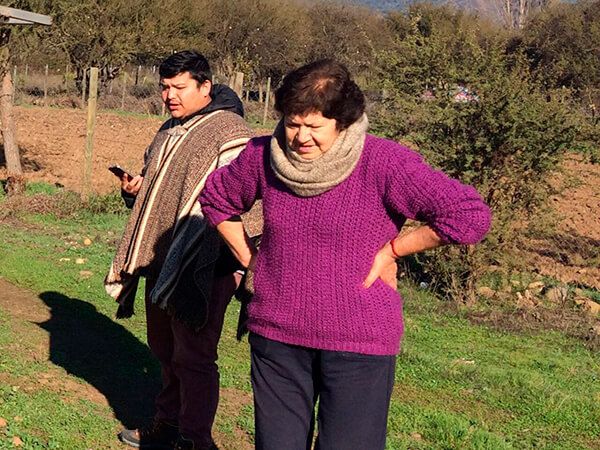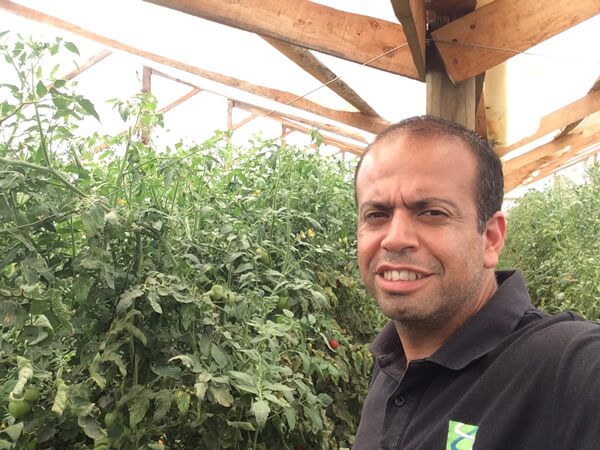Food Heroes: Chile
Case:
Horticultural activity is important for local farmers in Chile, where 10-15% of what is produced is consumed by the farmers, and the rest is sold locally. While many local farmers involved with horticulture started with no technical knowledge about the activity, they now have access to technologies that have allowed them to produce in a more responsible and sustainable manner thanks to the support from research, technology, and financing institutions. As a consequence, horticultural farmers have been able to increase their cultivated area and agricultural productivity, while diminishing the use of pesticides by incorporating different technologies and practices, such as soil analysis and bio-fumigations.
The Challenge:
Many producers are small farmers, and therefore are unable to incorporate multiple technologies at once. Therefore, farmers are committed to produce in a more responsible manner, being aware of different agricultural practices to yield safe and healthy food.
The Solution:
The availability of different technologies that have been validated on the field has allowed farmers to view the results for themselves and prove their effectiveness. Counting with the support of various institutions has closed the productivity gap and allowed for a smooth transition towards technological agriculture.
Food Hero: María Quintanilla Armijo

Name: María Quintanilla Armijo
Your Work: Horticultural farming in Comuna Alhué, Metropolitan region, Chile.
What inspires you? I became a farmer so that my daughter could go to school. To this day, I continue farming in order to help her with her studies.
Why did you become a farmer? Farming is my family's source of income, and it has allowed my daughter to go to college. Additionally, being a farmer has taught me about healthy eating.
What is your favorite recipe? Stuffed tomatoes and tomaticán (A stew usually made up of tomatoes, potatoes, onions and eggs)
What do you do to relax? I work on my garden and read books.
Case:
Horticulture is strongly practiced in the North Center Chilean region - between Atacama and Biobío – where 92% of the national horticultural crops are located. According to the National Institute of Statistics (INE), the national cultivated area reached 80,277 hectares, with its production ranging between 2.500.000 and 3.000.000 tons annually. It is estimated that 70% is consumed internally, and 30% is exported. Around 26,000 hectares are located within the Metropolitan region, corresponding to 32% of the total horticultural cultivated area.
The Challenge:
The great challenge for the Agricultural Research Institute (INIA) relies in transferring knowledge and validating technology for horticultural producers who belong to Agricultura Familiar Campesina (Family Farming) through a territorial development system. The goal is to increase productivity, profitability, and sustainability while closing the technology gap under the Aprender Haciendo (learning while doing) method.
The methodology established under the territorial plan is based in:
- Defining territory to implement technology through Technology Transfer.
- Identifying technological needs and gaps within production systems in the territory.
- Elaborating and implementing a work plan with users in the territory.
- Putting in practice the work plan, and evaluating the impact of the impemented and validated technologies within the territory.
The Solution:
Provide a service to the producers by using Grupos de Transferencia Tecnologica GTT (Technology Transfer Groups) under the Aprender Haciendo method. This methodology is already established in the region through 11 technology transfer groups: 9 groups formed by horticultural producers and 2 formed by professionals. This allows for a comprehensive training of local producers who can implement and validate technology kits, and thus obtaining an important success in the adoption of them.
Food Hero: Paulo Cesar Godoy Cáceres

Name: Paulo Cesar Godoy Cáceres
Your work: Agricultural Engineer – In charge of the Technology Transfer Unit in the Metropolitan region.
What inspires you? Sharing knowledge I obtained throughout my professional career, and seeing farmers grow from it while achieving economic, environmental and social sustainability.
Why did you choose to become an agricultural engineer? When I was a kid, I used to visit a town located in la Sexta Region, called La Estrella. I would watch the people – mostly farmers dedicated to wheat, chickpeas, sheep and coal production – and all their hard work. They inspired me to go into this wonderful field of study, and to seek opportunities to contribute to their growth and success.
What is your favorite recipe? My favorite recipe is meat with a salad made of red and green lettuce, kale, arugula and chard.
What do you do to relax? I like to travel and learn about new places and traditions, and being in contact with nature.















